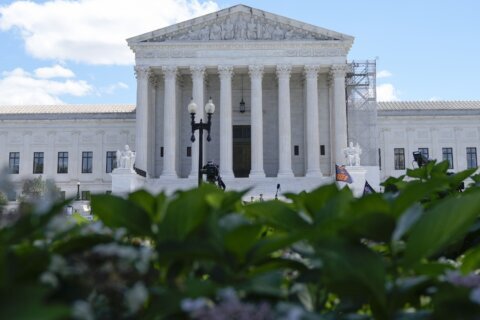As spring turns into summer, outdoor spaces, such as gardens, decks, pools and recreation areas receive more attention than at any other time of the year. The exterior of a home and its setting are the first things a potential buyer sees as they approach. First impressions are never more important than when flowers are in bloom, trees are in full array and grass is a lush carpet. But which outdoor features are most in demand, and will they always yield a return on your investment?
A Seamless Indoor-Outdoor Design
If outdoor features flow seamlessly from indoors to the terrace deck or garden — think Southern California lifestyle or Arizona desert living — the two areas will complement each other. Alternatively, outdoor embellishments or amendments that are not harmonious with the main structure, whether in style, purpose, or scale, can compete with each other. Frank Lloyd Wright, the famous American architect, developed his unique organic style with the belief that buildings should be designed to fit into their natural surroundings. A prime example of melding structure and site: Fallingwater, the house Wright designed for the Kaufmann family, constructed of reinforced concrete, appears to grow out of the Western Pennsylvania bedrock of the mountains in Mill Run, Pennsylvania, with a stream and waterfall under part of the house.
The Importance of Curb Appeal
Today’s houses, ranging from suburban tract houses to custom McMansions built on spec to urban apartment houses, are all influenced by their surroundings. The term “curb appeal,” defined by Merriam-Webster as “the visual attractiveness of a house as seen from the street,” is a strong determinant in how a building is sited and how potential buyers react to a house. Before a buyer sees the inside of a house, they encounter the exterior features and surrounding landscaping. It is no coincidence that since real estate agents started using large language models like ChatGPT to write listing descriptions, the word “nestled” is almost ubiquitous in describing how a house relates to its surroundings.
[Drawing Outside the Lines: The Meaning of Color in Real Estate]
The Backyard As We Know It Today
Outdoor features, backyard recreation and relaxation areas did not exist prior to the end of World War II. In the early 1950s, the aluminum and concrete that had been devoted to the war were repurposed in swimming pools and barbecues, according to Smithsonian Sparks. Prior to this time, land surrounding houses was used for vegetable gardens, laundry clotheslines and fenced animal pens. There was neither the time nor the space to enjoy patios, decks, or swimming pools. Children enjoyed playground equipment at school or in public playgrounds. Backyard swing sets, jungle gyms and trampolines were not commonplace until Americans began to move to newly constructed suburbs in the 1950s.
The Value of Outdoor Space in Urban Settings and Nationwide
Modern urban dwellers covet private outdoor space, such as a terrace, balcony or roof deck, which almost always enhances property value. An example from New York City: Jonathan Miller, president and CEO of appraisal firm Miller Samuel, recently told Brick Underground that one square foot of outdoor space is valued at about 25 to 50 percent of interior space. “For example, if you have an apartment that costs $1,500 per square foot, then a 500-square-foot terrace could add as much as $750 per square foot to the total purchase price.” During the pandemic, private outdoor space was in high demand for city dwellers who worked from home. “We’re still not seeing the valuation methodologies change,” Miller said. Approximately 22 percent of apartments sold in Manhattan in the past 12 months had outdoor space, compared with only 14 percent in 2017.
Nationwide, a patio or deck will also increase the sales price of a house, but not to the same degree as urban outdoor space. In a fall 2021 HomeLight survey, agents reported that outdoor space was the third-most-prioritized feature for homebuyers. Top agents surveyed by HomeLight estimated that a new patio costing $3,269 to construct would bring a $3,563 increase in value or a 109% return on investment (ROI). Sellers are advised to spend the least amount on patio construction, as patio ROI is higher for less ambitious, lower scale projects, according to the agents surveyed. Exercise restraint when designing your suburban or rural dream patio, and you will reap the benefits when it comes time to sell.
[READ: Is White Boxing Really the Best Way to Prepare a Home for Sale?]
The ROI of Pools
The swimming pool is the crown jewel of outdoor amenities in private homes and multi-unit housing. A simple in-ground pool with a surrounding cement deck is not cheap. Data by home improvement network and information company Angi shows that the construction of an in-ground pool costs around $65,000 on average. The costs can vary widely, of course. So can the return on investment. A Realtor.com analysis reveals the metros with the highest value-adds of pools to homes. In Fort Myers, Florida, a pool adds more than 20% to the sales price. In Dayton, Ohio, that percentage is 11.6%. However, the accompanying expenses of upkeep, fences, electricity, chemicals and additional structures, including changing rooms, showers and storage surrounded by landscaping, can elevate costs substantially. Be sure to factor in homeowner’s insurance for any slip-and-fall incidents or a mishap on the pool’s diving board or slide.
A homeowner in Florida may view a pool of any size as a necessity, whether they swim daily or infrequently. A pool and surrounding installments in Dallas may be a status symbol, while in Minnesota, an outdoor pool may be an oddity. A 2021 survey by Lending Tree, published by Fixr.com, reveals the U.S. cities with the largest concentration of swimming pools. Phoenix tops the list, where almost a third of homes have a pool. The next three spots are in Florida, with Miami clocking in with 30.6% of private homes having pools, Tampa with 27.7%, and Orlando with 25.9%.
Plan Your Outdoor Space Wisely
Whether planting geraniums near your front door, upgrading outdoor lighting or adding a new mailbox, every expense and effort adds to the value of your home. Carefully research the real estate market for outdoor features that are most in demand and speak to a real estate agent before investing in elaborate outdoor recreation features. Sometimes, a deck with a fire pit and outdoor kitchen may be more in demand in your state and immediate area and yield a greater return on investment.
Before investing in big-ticket items like tennis courts, exterior lighting or a swimming pool, research, budget and plan wisely. A cohesive, well-designed, carefully considered outdoor amenity can be a wise investment that you, as the homeowner, will also enjoy. There is no guarantee that random or grandiose additions will be beneficial or add to the aesthetics of your home, so choose accordingly.
More from U.S. News
Raised Patios, Rooftop Lounges and More: How Homeowners Are Transforming Small Yards In Big Ways
The Everlasting Battle between Total and Usable Square Footage
Building a Backyard Pond: Is It Worth It?
The Value of Outdoor Space originally appeared on usnews.com







